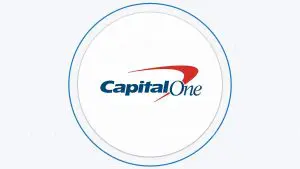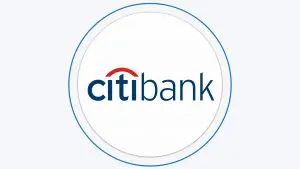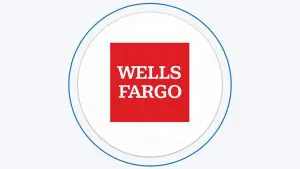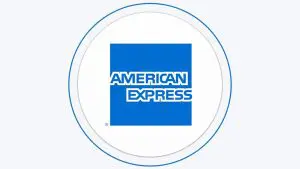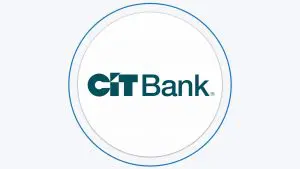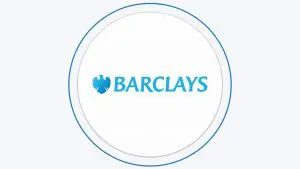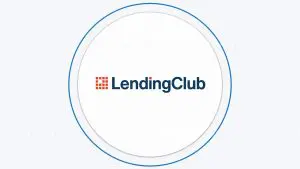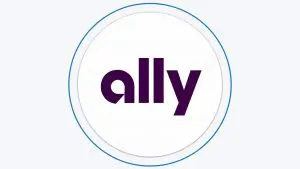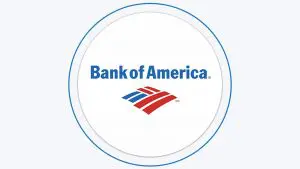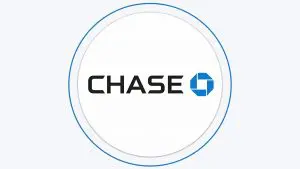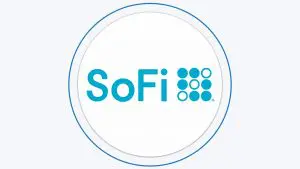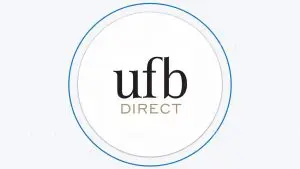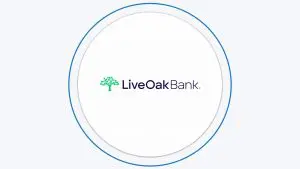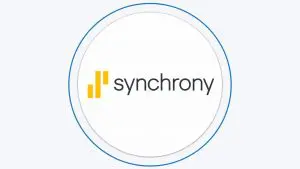Table Of Content
According to a survey by Fidelity Institutional Asset Management, the number of parents using a college savings account has increased by 16% between 2007 and 2016. The levels have remained relatively consistent between 2016 and 2020.
What Is a 529 Plan?
The first thing to take a look at is just what a 529 actually is. This type of investment account gives you a way to invest your money and then take it out for educational expenses.
If you do use it for these types of expenses, which can include tuition, fees, supplies, room and board or books, you’ll get tax breaks, which can be a big benefit for parents looking to save for their children’s future.
This type of account uses after-tax contributions and allows your money to continue to grow without you having to pay taxes on it. Then, when it’s time to withdraw the money for those educational purposes you don’t have to pay taxes on them. If you use it for other purposes, however, you’re going to need to pay taxes and a penalty of 10%.
Now, what’s really great about this type of plan is that it’s going to give you the opportunity to invest in mutual funds. Just like your 401(k), you’re going to be able to start building up your investment, and you’ll see it start to rise and fall over time.
Even better, you can take the money out at any time if you’re using it for educational purposes, with no limit based on age or retirement.
Based on data from Ascensus, there is a gradual increase in the 529 Savings Account Average Balance based on age. The chart shows that people in age 25 to 34 years have the lowest average balance at $8,302, but this increases to $20,479 in ages 35 to 44 years, then to the highest average balance of $38,490 in ages 45 to 54 years.
What to Know Before Opening a 529?
The following are things you must know before opening a 529 plan:
- Choose the right 529 plan – You have an option of choosing between a 529 prepaid plan or a 529 saving plan provided by your state or a broker. Though you can roll over from one account to the other, it is better to be right from the beginning. Also, ensure to compare the incentives provided by your state before buying an out-of-state 529 plan.
- Understand how fees impact your earnings – Before you even commit to a given 529 plan offered by the state or broker, ensure you shop around so you can choose the best provider with the lowest fees. For instance, you don’t want to pay account fees above 0.42 – 0.46% of your investment. Also, it is not economical to open an account with a provider who charges opening fees while there are providers who don’t charge an account opening fee.
- Learn how to select the most reliable Investment plan – Depending on your risk tolerance and profile, compare all the investment plans available for selection carefully. You may decide to seek help from an investment manager to help you create an investment plan.
- Watch for the Performance of a 529 plan – Always invest in a plan that has a track of consistent growth over the years. And if you are looking for high yields’ investment options, ensure the risks are minimal and worth selecting the plan.
Can a 529 Plan Be Used For Private High School?
According to the TCJA Act of 2018, you can use the funds you withdraw from your 529 account to pay for school expenses at secondary private, public, elementary, or parochial schools to a tune of $10,000 per year.
It also allows payment of a similar amount to K-12 tuition. Remember, the act spells out clearly which expenses you can qualify to pay for. Do not deviate from them, or you risk owing penalties and taxes on your earnings.
What Are The Restrictions on a 529 Plan?
The first restriction of a 529 plan is the type of expenses you can pay when you withdraw the money. Typically, you can only use the money on education-qualified expenditures as defined by the law. Using the money on other non-education expenses could result in taxes and penalties.
Another limitation is that, depending on the state, there is a maximum amount you can contribute to a 529 plan. Typically, it is around $235,000 per beneficiary. Besides, to qualify for a 529 plan, the account balance cannot exceed the projected academic costs of the beneficiary.
How To Open 529 Plan In 4 Steps?
When you decide to open a 529 plan you’re going to want to look at the different options. You can set up a prepaid tuition plan or a college savings plan. If you use the prepaid tuition plan you’re locking in a set price for tuition so that your child can go to that school for that rate.
But you’re going to have some strong limitations on just what else your child can actually use that money for. On the other hand, a college savings plan is the one that’s going to give you the ability to purchase a number of different things for your education.
However, you’re not going to get a lock on tuition prices. That means if tuition goes up (and usually it does) you’re going to have to pay those higher rates for tuition.
1. Shop Around
The first thing you’re going to want to do is take a look at the different options. While starting a plan in your state may be the easiest way to go it’s not always going to be the best one. So, take a look at the possible income tax deductions that happen with this type of account. It’s not always going to happen with every state.
For states that don’t have income tax at all you’re going to want to look at any other fees or things you’re going to have to pay to determine if you want to open a plan in your state or in another state.
If you live in Kansas, Arizona, Minnesota, Montana, Missouri or Pennsylvania you can actually get tax breaks even if you choose to invest in a program outside of your own state. You’ll also find that you can open one of these plans just about anywhere that you want, so you’ll be able to get the maximum benefits when you start it.
So, if you get a college plan you’re going to be able to use it anywhere.
Pay Attention To Restrictions & Bonuses
If you get a tuition plan you may be restricted to specific colleges or universities or even a single specific school in order to get that tuition lock. If you’re going to start a plan look for what program is going to give you the best deal.
Some states have extra bonuses related to their 529 plans and you may want to consider a different plan because of these bonuses. You might get income tax deductions, matched contributions or even waived fees.
Make sure that you’re looking at each of these and weighing out how much of a benefit they would be to you. Next, you’re going to have to take a look at the options for your plan, investment or prepaid.
The goal with a 529 plan is that you want to make sure you’re going to have plenty of money when your child (or you) decide to go to school. That means you want to look at any tax benefits, costs and investments that you’re going to be making.
You want to lower the costs that you’re spending so that you can maximize the return that you’re going to get. There are actually a number of different sites that you can go to in order to find out more about different investment options.
You want to know where you’re going to be able to save some money and where you’re going to get the biggest benefits in the long run.
2. Pick The Right 529 Plan For You
Next, you’re going to want to look for the specific form of plan you want, an individual or a custodial. These two plans are going to be slightly different, so you want to make sure you know what you’re getting into.
So, if you open an individual account you generally set a parent or guardian as the owner of the account and you can then set your child as a beneficiary. The great thing about these accounts is that anyone can contribute to the plan. This makes it a great idea for gifts when people don’t know what to get your child.
Now, you’ll need to choose a single parent that will be in charge of the account and you’ll want to pay attention to who is going to be filling out any financial aid forms to determine which parent this should be.
You want to make sure that the person in charge of the account is either a biological parent or a legal guardian to provide the best protection for the account and your child.
You’re going to need to fill out a great deal of paperwork, so make sure that you’re prepared for everything you’ll need and that you have everything together when you’re ready to apply. There are actually physical applications that can be filled out or you can fill out an online application.
Either way, you’re going to have no problem getting everything ready and sent in. Some may choose to open an account such as a custodial account, trust account or a business account.
If you do you should talk with a financial advisor about what these mean. If you’re not really sure what they are then you’re likely looking to open up an individual account for your child.
How Much Should Be in a 529 Plan?
When you want to open a 529 plan for your child and save for 18 years, target $37,328 for in-state public tuition and a maximum of $245,427 for private tuition. However. an exact figure of how much to contribute for the plan can be a far fetch goal.
With the current education cost rising every year by at least 4% and above, you might not have something left for yourself. As a result, you might want to consider all options available, like saving, only what you can afford.
Account Protection is A Key Decision
You want your child to be protected and you want their college account to be protected too. That means you should be keeping the account in the family as much as possible.
Put a biological parent rather than a stepparent on the account as the owner. Keep in mind that you will rarely be allowed to put more than one person on so the most responsible parent should be the one listed as well.
Be sure that you know what you’re signing when you set up the account and be ready to start investing.
3. Where Do You Want To Invest?
You’re finally going to be investing the money that you put into the account, so you want to make sure that you’re getting the biggest return you can based on the amount of risk that you’re willing to take.
You’re generally going to be invested into mutual funds or exchange-traded funds. And these are going to be managed for you, but you get to choose between a few different ideas to set up just what you want your account to do.
You can set an age-based account that will start you out with higher risk assets and then slowly drop some of the risk as your child gets closer to the age where they will need the money.
So, if your child is five now, the balance of stocks to bonds will be overwhelmingly on the side of stocks. As they get closer to 18 the balance will shift so that they are overwhelmingly on the side of cash and bonds instead.
Next, you can choose to go with a static option. This one means that you get to invest in a set option and you stay there.
There are no changes made as the child gets older and depending on what you choose to invest in you could see a great deal of volatility or you could see very little growth in the investment overall.
Make Sure You Understand What You Choose
You’ll be able to choose, within these categories, how much risk you’re willing to take and what you’re actually looking to achieve overall. You want to make sure that you’re going to get into something you can feel comfortable with.
In general, that means you should be investing more in stocks if you’re open to risk in exchange for the potential of larger rewards. You should be investing more in bonds if you are averse to risk but willing to also sacrifice some of those larger rewards.
You may also find accounts that are insurance-backed or principal-protected. These are going to keep you better protected and make sure that you’re not taking on much risk at all.
It means that you’re going to keep your original investment but you’re likely not going to see a lot of benefit otherwise. Even better, you’re not going to be responsible for investing the accounts or doing anything with them. Someone else takes care of this for you.
Can You Lose Money in a 529 Plan?
It is unlikely that you will lose money in a 529 plan, but it's possible. Since you invest the money, in case the stock market falls and large portion of your investments going down as well, it's definitely possible to lose some of your money.
However, the money you save with a 529 plan is solely yours, even if the main target is to save towards higher education or college. If there is an unused balance, you can use the money on another beneficiary who fits the description of your family member.
For instance, you can decide to use it on yourself, grandchildren, nephews, your younger siblings, or even nieces. You can even withdraw any scholarships awards without penalty or use the money on other unrelated expenses, but you will have to pay a 10% penalty and owe some taxes on the income earned.
4. Deposit Your Funds
The final step in the process is also the first, getting started. You want to make sure that you’re putting money into the account as early as possible because that’s going to give you the best possible chance of getting more money back.
You’ll earn a lot more in interest when it comes to investing early. For those who apply online you can make a bank transfer, which will get your account set up and earning interest within a short period of time.
On the other hand, if you apply via a paper application and send a check it could take a few weeks before you actually start your investment. Make sure that you’re filling out the paperwork completely and not missing anything since you don’t want to delay the start of your account any further.
How Does a 529 Plan Grow?
When you make contributions to a 529 plan, the money grows federal tax-free over the years, you won’t take money out to pay for college. For example, assume that start your account with a contribution of $10,000 with a return of 6% per annum. That means your account will have a total earning of 6% * 10,000, $600. Since the returns are not tax-deductible, ($600) is the exact amount your account will generate without any deductions.
However, you cannot use this earning on anything else other than permitted education-related expenses. If you decide to use the money for your other expenses, you will pay a penalty, and the amount withdrawn will be subject to income taxes.
How Do 529 Plans Affect Financial Aid?
How a 529 plan affects financial aid for your child or yourself depends on a few things, like who owns the plan, the type of financial aid you are applying for, and when you will be withdrawing from the account.
Typically, a 529 plan can belong to a parent of the beneficiary, the student, or a relative. Depending on who owns the account, the financial aid will be either less or more. In this case, if the account owner is a relative, the aid will be less, compared to if it is under the parent or student.
Therefore, to mitigate the adverse impact, consider the following.
First, the student can apply for a merit-based scholarship rather than need-based financial aids. If the money is not enough, consider applying for private student loans. When you have several 529 plans, start with the parent, then the student, and use the relative at last during the final years of school.
Bottom Line
In general, this is a great way to invest and to get some tax breaks toward your child’s education. It’s a great way to help your child pay for the things they’re going to need when it comes to pursuing their education and you will barely even notice the money is gone.
Especially since you’re going to get a whole lot of extra money at the end in the form of all that interest.
FAQs
Is a 529 account tax-deductible?
All the contributions you make towards a 529 account are not tax-deductible. Some states, however, may consider 529 contributions tax deductible. Check with your 529 plan or your state to see if you qualify.
However, you must use the fund solely for the intended purpose, for example, education tuition, fees, boarding rent, books, etc. If you decide to use the fund for unrelated expenses, you will pay a 10% penalty and owe taxes on income earnings.
Does it cost money to open a 529?
Depending on which state you live in or which agent you are dealing with, opening a 529 account may attract fees or not. However, some accounts may have a total of 0.42% – 0.46% charges per year.
These fees may include the wealth front advisory fee or program administration fees. If you have selected a 529 plan that allows you to invest in high-return assets, you may notice some ETF expenses deductions.
Can you open a 529 plan for yourself?
Yes, you can open a 529 account for yourself to fund your academic education in the future. However, you must be careful with what you spend your returns on, as you can face penalties on expenses not related to education.
As a result, ensure all the expenditures are education-related, like paying for tuition, computer, fees, books, boarding, etc.
How much interest does a 529 plan earn?
Before 2011, the annual growth of a 529 plan was a fixed simple interest of 3%, which only took into account the principal. However, with the now compounded annual growth rate (CAGR), the results can be as much as the growth of your investment plan. This is because CAGR accounts for the principal and accrued interest to calculate the earnings for the following year.
For example, if your investment was on S&P, which had a 12% CAGR from 2011 to 2020, with a $10,000 529 account balance, your account could have accumulated $17,731 tax-free earnings, compared to $3,048 on the same period if it was using the 3% simple interest formula.
How do you withdraw money from a 529 plan?
To withdrawal money from a 529 plan, start by calculating education expenses that meet the qualifying criteria. Ensure your budget is within the set limits. If the beneficiary has multiple 529 accounts, decide which account to withdraw from first.
Preferably, use a parent account first and a relative later in the final years of the student. You can then initiate the withdrawal request. Depending on your loan servicer, you can use either an online platform, mailing a filled withdrawal request form, or making a telephone call.
What are qualified expenses for a 529 plan?
The list below highlights all eligible 529 plan expenses.
- Education tuition and fees
- Trade and vocational school tuition fees
- Secondary school tuition
- Elementary school tuition
- Student loan debt
- Off-campus housing
- Food and meal plans
- Book and supplies
- Computers for the student
- Computer software
- Internet services
- Special-needs equipment
- Business purchases done in the final year of college
How long can a 529 plan be open?
A 529 plan does not have a maximum time limit you can hold it. The only rule for the account is that it must be for a living beneficiary. That means if you have a newborn child, and you open a 529 plan for it, no matter how old he/she will live, the account can always remain open. The idea is that education is endless, and the beneficiary can always go back to school no matter the age.

